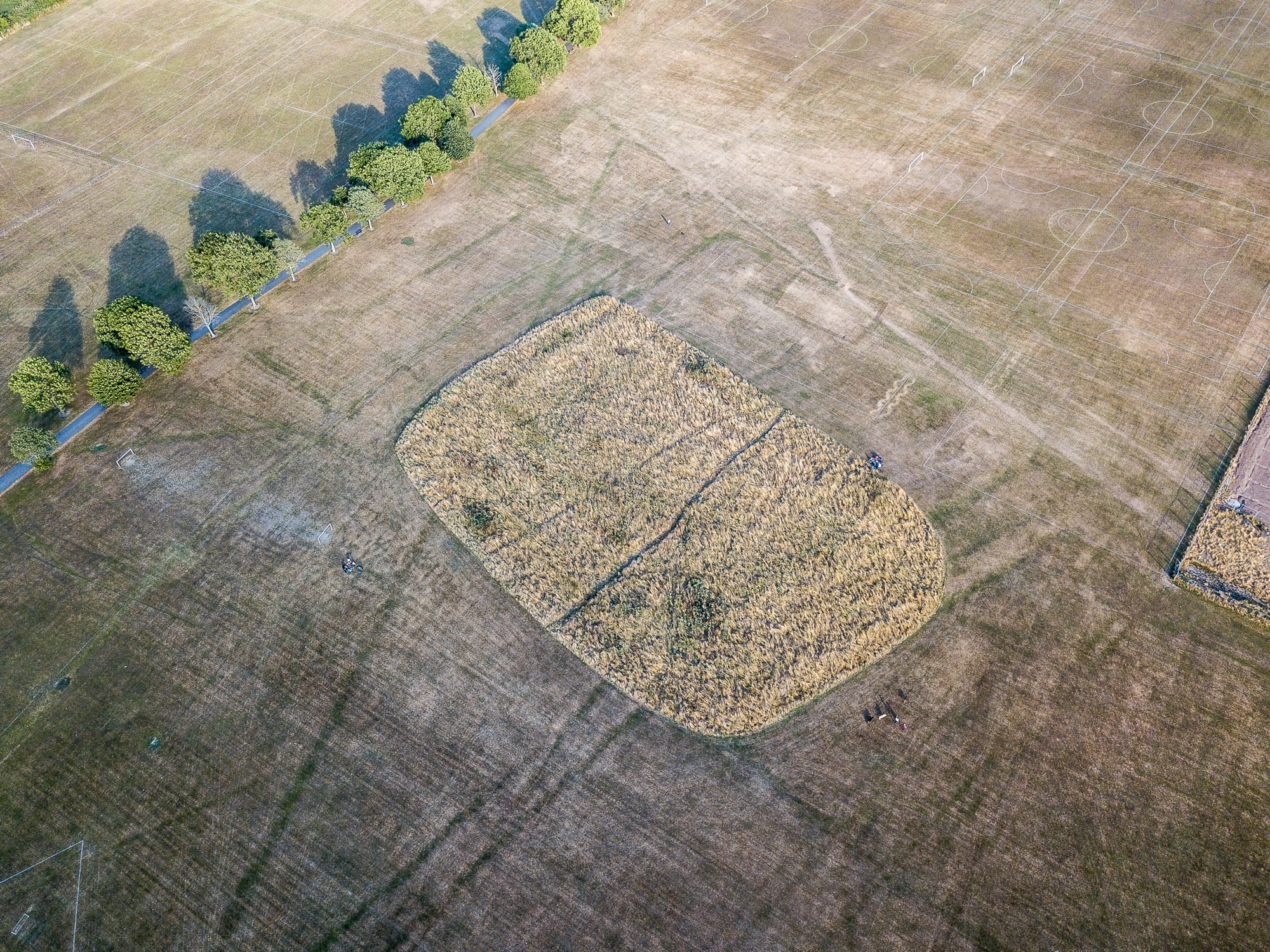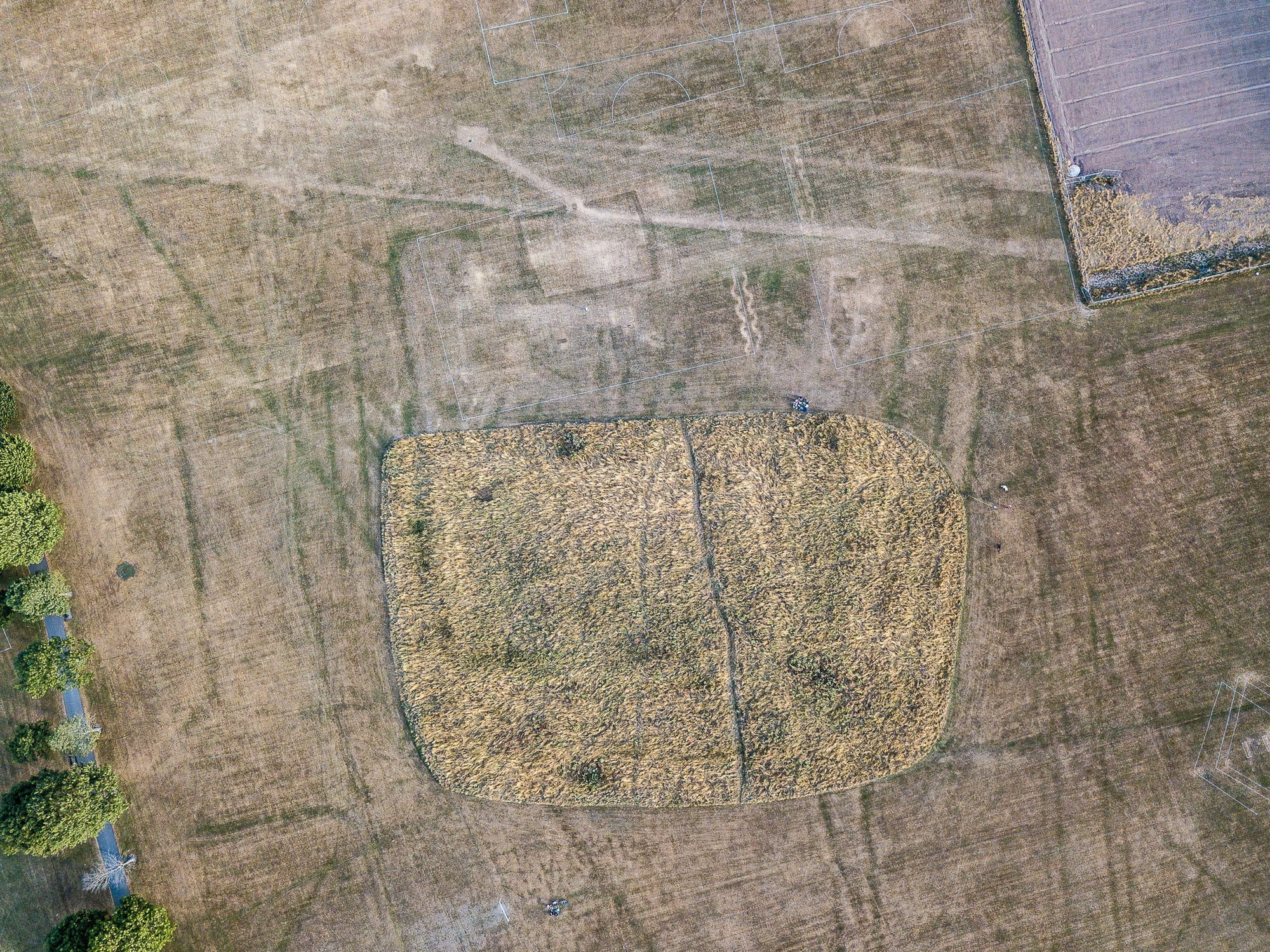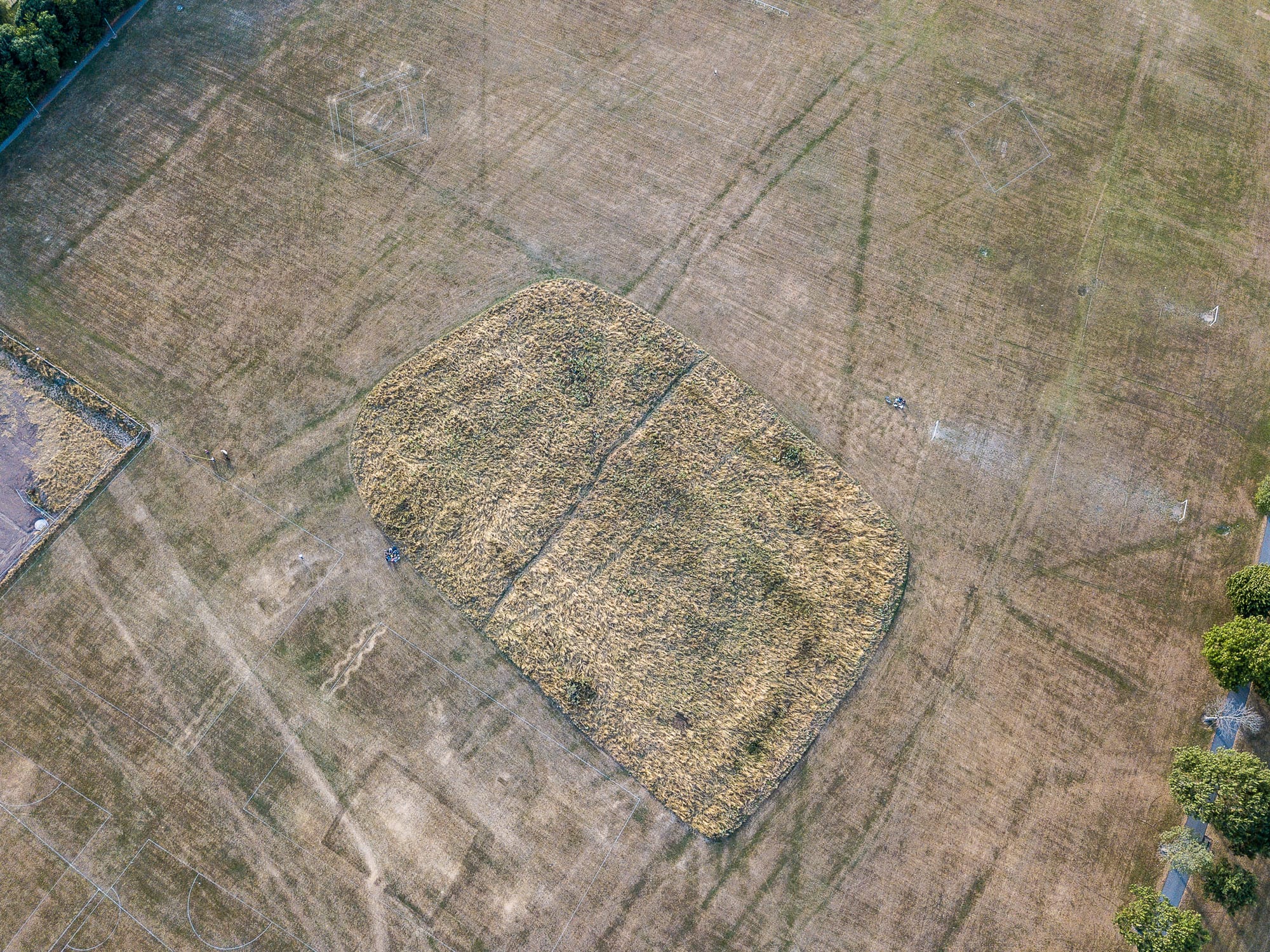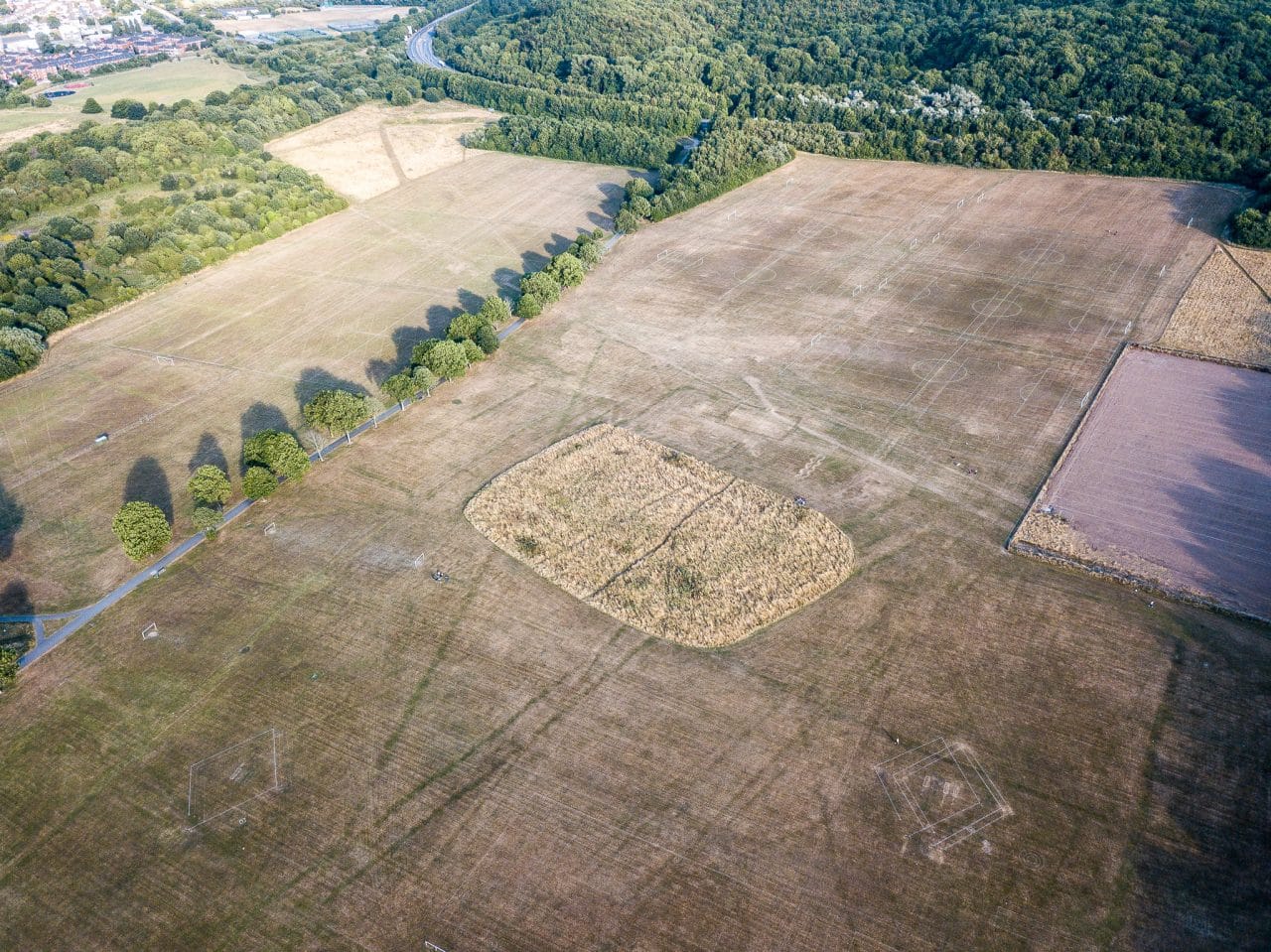The long, hot summer of 2020 provided plenty of opportunity for the shadows of buried archaeological sites to emerge. Trelai Park in Ely, Cardiff, is home to the Roman Villa.
The Roman villa in Trelai Park, Cardiff, provides evidence of Roman settlement in the area. Initially discovered in 1894, the villa was more extensively excavated in the 1920s. It dates from the 2nd century AD and features a unique layout with wings facing south. The villa was likely built on a small island within a marshy area and was in use until at least the 4th century AD. Today, the site is a Scheduled Ancient Monument, visible as a distinct, unmown area within the park.
The villa showcases Roman ingenuity with its hypocaust system, an early form of underfloor heating. A wealth of pottery and coins found onsite point to a long duration of use, from the 2nd to the 4th century AD, giving us a glimpse into trade networks of the Roman period.
Interestingly, evidence suggests the site may have held significance even after the Roman era. Traces of early medieval activity hint at the continued importance of this location throughout history.
The TerraDat survey team includes fully CAA-qualified drone pilots who routinely complement our archaeological surveys with aerial photographs and photogrammetry.



Aerial images from the Roman Villa at Trelai Park in Cardiff

